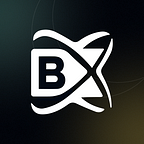Fungible vs Non-Fungible Tokens (NFT): What’s the Difference?
At issue here isn’t new; coins-like objects were already being traded during the Roman Empire, used as tokens in activities like visiting brothels and gambling establishments, with one unit exchanging for another team; non-fungible tokens however are singular units, no two being exactly alike.
Divisibility of tokens determines their fungibility; one Bitcoin can be divided up into 100,000,000 smaller units called Satoshi and therefore is fungible — interchangeable with any other Bitcoin. Ethereum, on the other hand, is not divisible; hence must be exchanged for another Ether instead.
At a time when cryptocurrency reigns supreme, tokens represent physical or non-physical items in your ecosystem. Non-fungible tokens serve as assets while fungible ones can serve as currency; the main distinction being that non-fungible ones cannot be traded; only fungible ones can.
Non-fungible tokens tend to be utilized more than their fungible counterparts; the latter possess greater versatility as they can represent currency, store of value, or unit of account while non-fungible tokens serve primarily as assets.
What are the different kinds of tokens available?
There are two primary types of tokens — fungible and not fungible. Fungible units can be interchanged freely; any unit equals any other unit. In contrast, non-fungible tokens all represent unique units.
Utility tokens provide users with access to blockchain-based products and services.
Security tokens represent traditional assets like shares and stocks that can be tracked on the blockchain.
What are Fungible and Non-Fungible Tokens?
Many individuals find the concept of fungibility challenging, particularly those unfamiliar with economics. What sets crypto token fungibility apart is its unique script code used to demonstrate it rather than any traditional economic or security principle.
What are fungible and non-fungible tokens?
Fungibility refers to the ability of an asset or service to be swapped out with another similar one, for instance, a barrel of crude oil can be exchanged for another barrel without changing its identity or function.
Non-fungible tokens, also known as Non-Fungible Tokens or NFTs, are digital assets with unique values that cannot be exchanged for another asset of the same type; each NFT has a higher value than fungible ones due to their limited exchangeability.
The primary distinction between fungible and non-fungible assets is in their storage capabilities; non-fungible assets like research diplomas or paintings contain more data than fungible ones like Bitcoin.
What are the differences between tokens and cryptocurrencies?
Cryptography is used to protect both cryptocurrencies and tokens; however, there are some subtle distinctions between them.
Tokens may be centralized or distributed and may utilize blockchain or not.
Tokens represent assets, while cryptocurrencies serve as an exchange medium. Cryptocurrencies may either be fungible (fungible) or non-fungible.
How can you tell the difference between fungible and non-fungible tokens on a Blockchain?
Digital assets, like Bitcoin, are easily exchanged for other assets of equal value; each coin in circulation is identical; On the other hand, non-fungible Tokens (NFTs) cannot be traded with another purchase of equivalent value — making each NFT more valuable than its fungible counterparts.
The primary distinction between fungible and non-fungible assets lies in their storage capabilities; non-fungible assets like diplomas from universities or paintings contain more data than their fungible counterparts such as Bitcoin.
Fungibility refers to an asset’s interchangeability; when something can be replaced with another good or service of the same kind. A barrel of crude oil for example could easily be swapped out for any other barrel on a farm.
Non-fungible is a term that refers to crypto tokens that cannot be easily swapped between holders; such digital assets as Non-fungible token development (NFTs) cannot be exchanged for another purchase of similar type and possess unique values that make them more valuable than fungible coins.
In 2017, NFTO saw its inaugural real-world application when CryptoKitties, an Ethereum blockchain game, was released for play. CryptoKitties represented NFTs' first introduction into crypto-world history when released for public consumption on the Ethereum blockchain in 2017.
How does NFT operate and can I create one myself?
Non-fungible tokens (NFT) can be created on any public blockchain platform and made accessible to everyone, often called smart contracts. Ethereum, EOSIO, and TRON are three popular NFT platforms.
Before creating an NFT, you will first need to decide on the blockchain platform of your choice and comply with its rules and guidelines. On the Ethereum blockchain specifically, Solidity must be used when creating an NFT.
Once you have selected a platform and created your NFT, it is time to mint it. Minting involves creating new NFTs and adding them to the blockchain network.
How to Buy or Sell Non-Fungible Tokens (NFTs)
Digital proofs of ownership, known as NFTs, can now be purchased and sold online. NFTs can represent digital art but also clothing items, gaming assets or membership subscriptions.
Before investing in an NFT, it is wise to conduct some preliminary research. Investigate where it is being sold and its price. nft development company solutions Make sure it will be stored safely — perhaps in an electronic wallet.
Once you find one you like, NFTs can be purchased using cryptocurrency. Ethereum is currently the most widely-used option to buy and sell NFTs; however, other options do exist.
What are the advantages and disadvantages of non-fungible tokens?
Pros:
- Non-fungible tokens cannot be converted to other assets of an equal nature, making them more valuable than tokens that can be reused multiple times.
- NFT emails can store large volumes of data.
- NFT emails utilize Blockchain technology, making them secure and transparent.
Pros and Cons:
- Establishing an NFT requires some technical know-how.
- NFTs have not been widely adopted or understood, which could prevent their adoption.
- NFTs may experience dramatic decreases in value.
